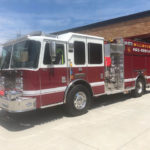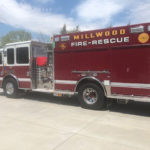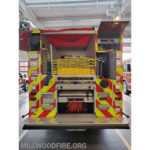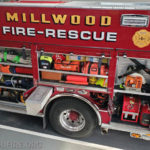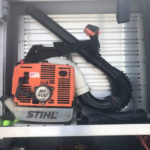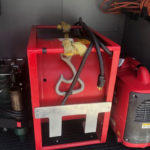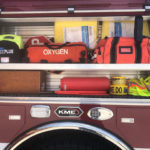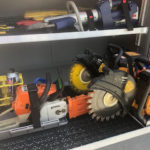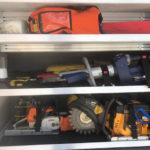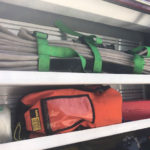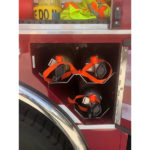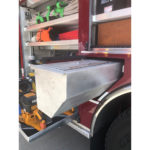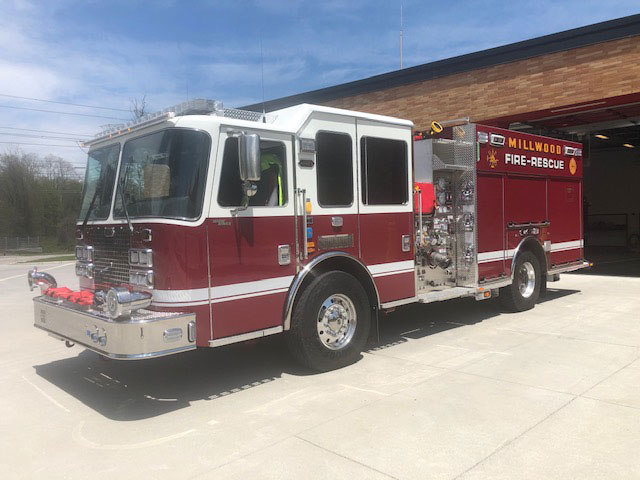
Millwood is a hamlet of the town of New Castle located in Westchester County, New York. It is a picturesque suburb of New York City that offers a beautiful downtown area with quaint shops and storefronts and many parks that offer residents an abundance of recreational activities. The Millwood (NY) Fire Company protects its residents as well as large portions of the adjacent areas of Chappaqua and Ossining. The fire district spans about 10 square miles, protecting primarily residential occupancies with some commercial establishments. A large portion of its response area has no fire hydrants because of diverse terrain. To combat this, it operates out of two fire stations and has a 3,000-gallon tanker. In addition, the area relies on a mutual-aid agreement with surrounding departments to provide tankers when needed. The department also covers a five-mile portion of the Taconic State Parkway and often puts its hydraulic extrication equipment to use on this windy and treacherous highway.
Related Content
- Compartment Corner: Berkshire (NY) Brush/Rescue Unit
- Compartment Corner: Orchard Park (NY) Heavy Rescue
- Mike Ciampo Archive
As with the creation of many volunteer fire departments, a tragedy had to strike before the need for fire protection became an urgent matter. In 1924, a lightning strike stuck the Millwood Railroad Station and a large fire ensued. Although area residents attempted to extinguish the fire, they did not have the equipment or staffing available. An adjoining town’s fire department responded to extinguish the fire, but to the local residents, this underscored the need for the town to have its own fire protection. Shortly after this blaze, residents met to organize the Millwood Fire Company and provide fire suppression protection to the community. A plot of land was donated by a local family, and founders of the department leant money while residents were solicited to donate to build a firehouse and purchase a 1924 Brockway chemical engine.
During the early days, firefighters were summoned to the firehouse by a member hammering a large bell in front of quarters. Today that bell is still in place as a testament to the department’s history. Today the department operates out of two stations with the following pieces of fire apparatus: Engine 248, a 2004 Sutphen/Spartan; Rescue 36, a 2017 KME heavy rescue; Tanker 15, a 1994 3D/Kenworth; Ladder 52, a 2008 Stuphen 75-foot aerial; Mini-Attack, a 2012 Ford F550; and Utility 44, a 2002 Chevy 2500 pickup truck. It also operates two marine units, which are both inflatables, a 10-foot Avon and a 14-foot Mercury with a 25-hp jet drive outboard engine and a Special Operations trailer that has additional hazmatsupplies and traffic control equipment.

Engine 247 is a new 2020 KME Predator Severe Service rescue-pumper with an aluminum body with Amdor roll-up compartment doors. It is painted white over red on the cab portion and all red on the body, including all the roll-up doors except the rear one. Behind the rear roll-up door is something not commonly found on many apparatus these days: a Hannay Reel with 150 feet of ¾-inch Reeltex booster hose. The engine has two white reflective stripes, a large one over a thinner one, running on the underside of the entire cab and then along the lower sides of the rescue body. The rear of the body has the compliant chevron stripping pattern for visibility and safety. The front of the engine has an extended bumper with two hose wells for storing 100 feet of 1¾-inch hose and a length of suction. It also has a large 6-inch swivel intake elbow and 2½-inchswivel discharge elbow. The rig is powered by a Cummins L9 450-hp engine with an Allison EVS-3000 transmission. It also has a two-speed Jacobs engine brake to assist in slowing and stopping the vehicle during emergency responses. Other safety features included are: Velvac heated mirrors for the operator to see behind him during responses in bad weather conditions and Intec backup camera. To keep Engine 247 ready for response, it has a Kussmaul auto-eject pump plus for air and battery charging. The cab sits six firefighters, and five of the seats have SCBA in their frames. The crew cab also has storage for various forcible entry tools and hand lights.
The rig has a 750-gallon UPF Poly rectangular “L” shaped tank to provide the engine with a lower hosebed. There’s also a 30-gallon UPF foam tank with top fill next to the booster tank’s fill, both clearly marked with signage and different colors (blue=water, green=foam). The foam system includes a Williams High Head Around the Pump system which provides 0.25, 0.5, 1, 3 and 6 percent foam capabilities. The engine’s pump is a single-stage Hale Qmax 1,500-gpm pump with front and rear inlets that have Elkhart electric valves, as does the 4-inch discharge on the officer’s side of the pump panel. The pump is equipped with an FRC Pump Boss pressure governor and Trident air pump primer with a pushbutton control. Off the pump’s riser pipe, mounted on the upper body of the engine, is an Elkhart Stinger 2 monitor nozzle with a X-Stream tip on it. Engine 247 also carries a portable Elkhart Stinger 2 with a stream shaper and quad tips (1 3/8, 1½, 1¾, and 2 inch). There are also three crosslay hosebeds that are set up for carrying: 150 feet of 1¾-, 200 feet of 2- and 200 feet of 2½-inch hose. To ensure firefighters are aware of the water tank levels, the cab is equipped with Whelen PS-Tank level strip lights mounted just behind the crew cab doors.
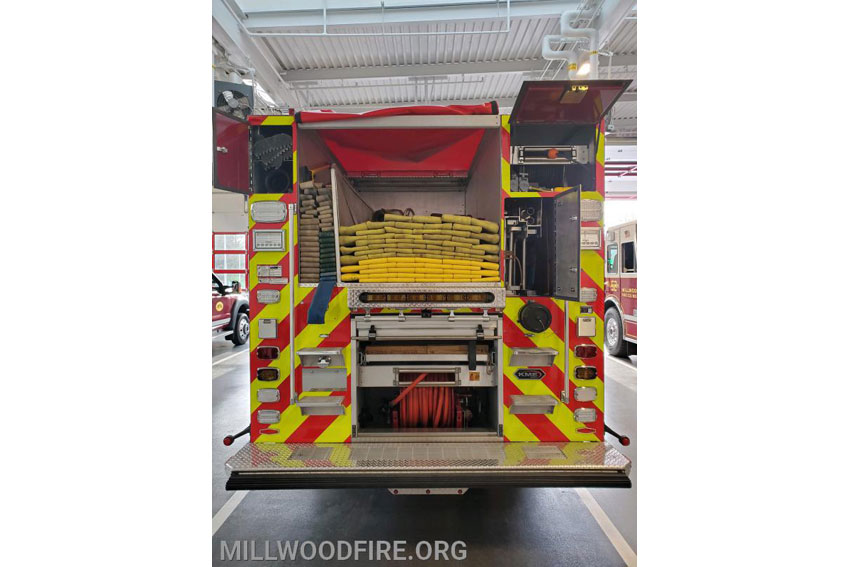
The rear of the rig has three compartments. The lower one behind the roll-up door houses the booster line, while the other three have hinged doors. The upper left side compartment has two angle trays holding two 10-foot sections of 6-inch Kochek flexible clear lightweight hard suction sleeves and brush fire rakes. The upper right compartment stores the engine’s second Hannay electric reel, holding 200 feet of power cord with a 4-outlet junction box. The lower right compartment holds the engine’s ladder complement of Duo-Safety 24-foot extension, 16-foot roof, and 10-foot folding ladder. There are also a few hooks stored here. The top of the rescue body is equipped with coffin-style compartments and an autos-tow Will Burt Night Scan Chief 2.3 light tower, which is equipped with four Whelen Pioneer lights and green flashing light at the top. Also mounted on top, is the Harrison MPC 10-kW hydraulic generator. The rig is equipped with a Whelen emergency light package, Amdor Luma Bar strip lights in each compartment, Whelen electric siren, Federal Q2B mechanical siren, and two Grover air horns to aid in responding.
The officer’s side of the apparatus is equipped with a variety of tools and equipment in the compartments. The apparatus committee even took advantage of using all viable space for storage and useful purposes. In the wheel well area, there are two storage spaces; the front compartment holds three spare air bottles while the back has a pull-out storage bin holding absorbent. The front compartment, nearest the pump panel, also has a unique tool not commonly scene on an engine—a Stihl backpack blower that is mounted on the top shelf and used at brush fires, at auto accidents to push back debris, and even used to dry the engine after washing. On the lower shelf in this compartment is a Honda portable generator, exhaust fan, and a portable dewatering pump. The wheel well compartment carries EMS equipment on the top shelf and traffic emergency equipment (flares, signs, vests, and fire line tape) on the lower shelf. In the rear compartment there are four shelves—the top three are stationary, while the bottom is a slide-out tray. The top shelf holds folded hose for standpipe operations or for extending a line. The second shelf down from the top stores a rope bottle with utility rope for vertical hose stretches, a rope bag, and a plastic box of flares. The third shelf down from the top holds a HURST Jaws of Life eDRAULIC combi tool, spare battery, safety tarps, and some smaller extrication equipment. The bottom slide-out tray is the saw shelf that holds two rotary saws and one chain saw with brackets for fuel storage attached to the shelf.
Engine 247 is a well-equipped and well-thought-out piece of apparatus. All viable space on the rescue body is used for equipment storage. The apparatus committee and department members worked hard with KME to design an engine that meets the department’s needs for future responses.
*Appreciation is extended to Ex-Chief Greg Santone, the Millwood Fire Department, and Milan David of Bulldog Fire Apparatus for their assistance in this column.
MICHAEL N. CIAMPO is a 34-year veteran of the fire service and a lieutenant in the Fire Department of New York. Previously, he served with the District of Columbia Fire Department. He has a bachelor’s degree in fire science from John Jay College of Criminal Justice in New York City. He is the lead instructor for the FDIC International Truck Essentials H.O.T. program. He wrote the Ladders and Ventilation chapters for Fire Engineering’s Handbook for Firefighter I and II (Fire Engineering, 2009) and the Bread and Butter Portable Ladders DVD and is featured in “Training Minutes” truck company videos on www.FireEngineering.com.
